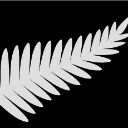- Home
- /
- Programming
- /
- Programming
- /
- How to separate the non unique values
- RSS Feed
- Mark Topic as New
- Mark Topic as Read
- Float this Topic for Current User
- Bookmark
- Subscribe
- Mute
- Printer Friendly Page
- Mark as New
- Bookmark
- Subscribe
- Mute
- RSS Feed
- Permalink
- Report Inappropriate Content
Hi,
How to separate data that have duplicate records when by id those are more than 2 records.
example:
data test;
date id value
22Mar 1 x
22MAr 2 x
22 Mar 3 x
24 Mar 1 x
24 Mar 2 x
28 Mar 1 x
30 Sep 1 x
15 Jan 1 x
15 Jan 2 Y
15 Jan 3 x
want two data set
Duplicate by date and value ,in duplicate include single records also
in red color in one dataset those are duplicate by value and green in another data set which are not duplicate by value
Note: if only one record for the date the records also consider as duplicate and separate
Thank you,
Rajasekhar.
- Mark as New
- Bookmark
- Subscribe
- Mute
- RSS Feed
- Permalink
- Report Inappropriate Content
@raja777pharma wrote:
Hi,
How to separate data that have duplicate records when by id those are more than 2 records.
example:
data test;
date id value
22Mar 1 x
22MAr 2 x
22 Mar 3 x
24 Mar 1 x
24 Mar 2 x
28 Mar 1 x
30 Sep 1 x
15 Jan 1 x
15 Jan 2 Y
15 Jan 3 x
want two data set
Duplicate by date and value ,in duplicate include single records also
in red color in one dataset those are duplicate by value and green in another data set which are not duplicate by value
Note: if only one record for the date the records also consider as duplicate and separate
The requirements are unclear,
Why are the two 15JAN X observations not duplicates?
- Mark as New
- Bookmark
- Subscribe
- Mute
- RSS Feed
- Permalink
- Report Inappropriate Content
Hi ,
Below values are not have same value by ID
15 Jan 1 x
15 Jan 2 Y
15 Jan 3 x
- Mark as New
- Bookmark
- Subscribe
- Mute
- RSS Feed
- Permalink
- Report Inappropriate Content
This marks the records for separation as you posted:
proc sql;
select *, count(distinct VALUE) 'Count'
from TEST
group by DATE;| date | id | value | OBS | Count |
|---|---|---|---|---|
| 15JAN2024 | 2 | Y | 9 | 2 |
| 15JAN2024 | 3 | x | 10 | 2 |
| 15JAN2024 | 1 | x | 8 | 2 |
| 22MAR2024 | 1 | x | 1 | 1 |
| 22MAR2024 | 3 | x | 3 | 1 |
| 22MAR2024 | 2 | x | 2 | 1 |
| 24MAR2024 | 2 | x | 5 | 1 |
| 24MAR2024 | 1 | x | 4 | 1 |
| 28MAR2024 | 1 | x | 6 | 1 |
| 30SEP2024 | 1 | x | 7 | 1 |
- Mark as New
- Bookmark
- Subscribe
- Mute
- RSS Feed
- Permalink
- Report Inappropriate Content
- Mark as New
- Bookmark
- Subscribe
- Mute
- RSS Feed
- Permalink
- Report Inappropriate Content
data duplicates non_duplicates;
set test;
by date value;
/* If the current observation is NOT both the first and last occurrence, it is a duplicate */
if not (first.value and last.value) then output duplicates;
else output non_duplicates;
run;To achieve this task, you can create two datasets in SAS: one that contains duplicates based on date and value (including single records for a given date) and another dataset that contains non-duplicate records by date and value. Here's how you can do this using PROC SQL and DATA STEP approaches.
Step 1: Prepare the Sample Data
data test;
input date :$10. id value $;
datalines;
22Mar 1 x
22Mar 2 x
22Mar 3 x
24Mar 1 x
24Mar 2 x
28Mar 1 x
30Sep 1 x
15Jan 1 x
15Jan 2 y
15Jan 3 x
;
run;proc sql;
create table duplicates as
select *
from test
group by date, value
having count(*) >= 1; /* this includes both duplicates and single records */
quit;data duplicates non_duplicates;
set test;
by date value;
/* If the current observation is NOT both the first and last occurrence, it is a duplicate */
if not (first.value and last.value) then output duplicates;
else output non_duplicates;
run;
April 27 – 30 | Gaylord Texan | Grapevine, Texas
Registration is open
Walk in ready to learn. Walk out ready to deliver. This is the data and AI conference you can't afford to miss.
Register now and lock in 2025 pricing—just $495!
Learn how use the CAT functions in SAS to join values from multiple variables into a single value.
Find more tutorials on the SAS Users YouTube channel.
SAS Training: Just a Click Away
Ready to level-up your skills? Choose your own adventure.



